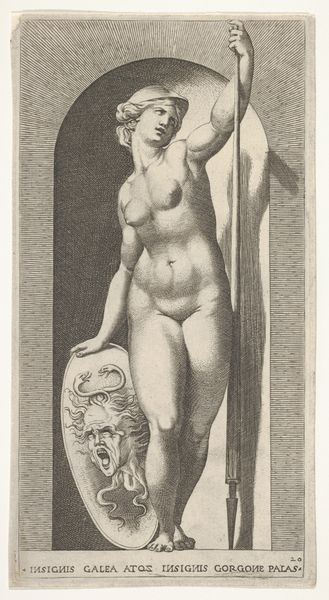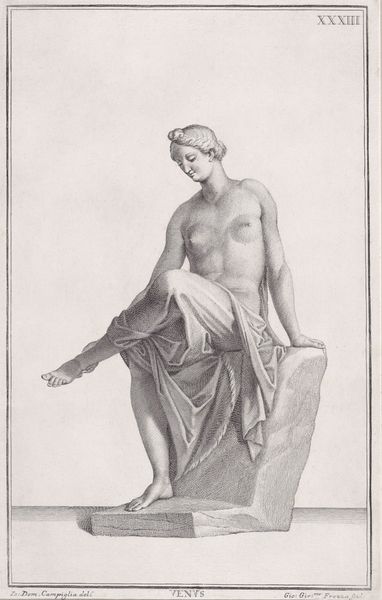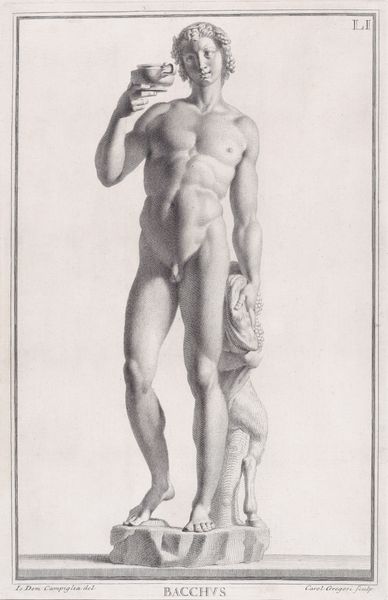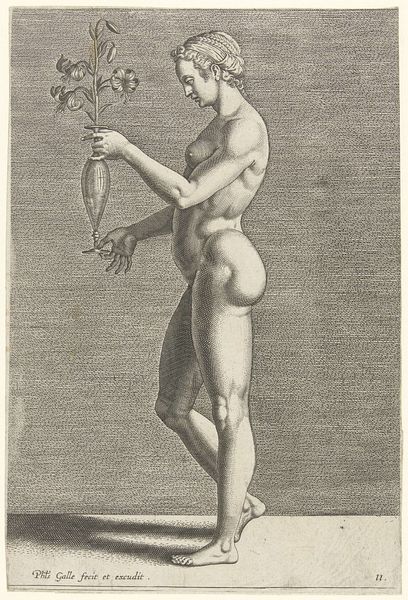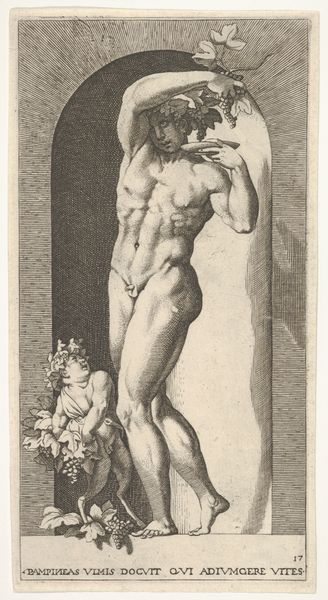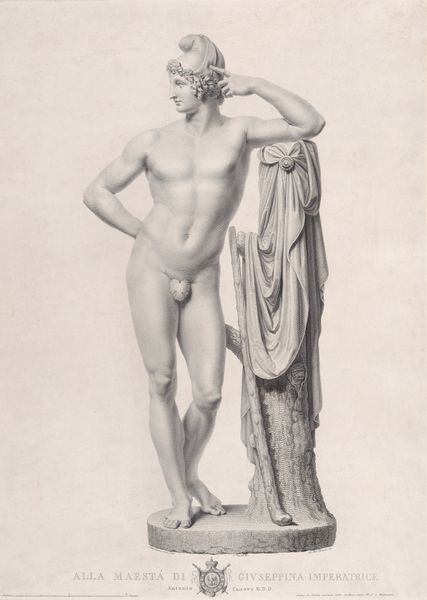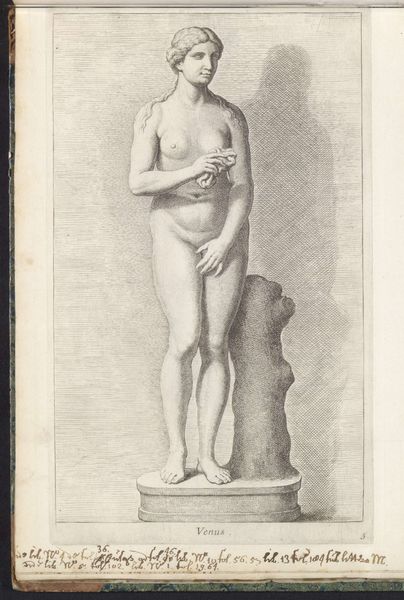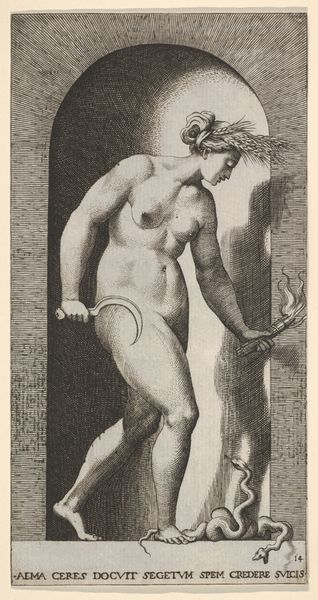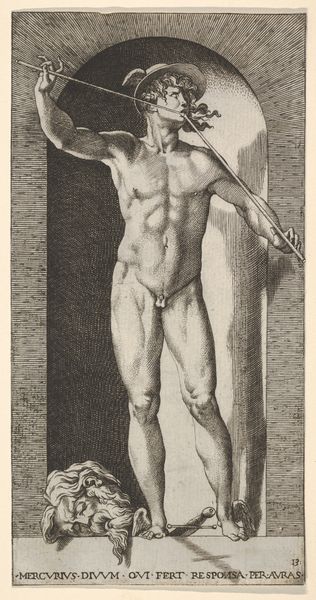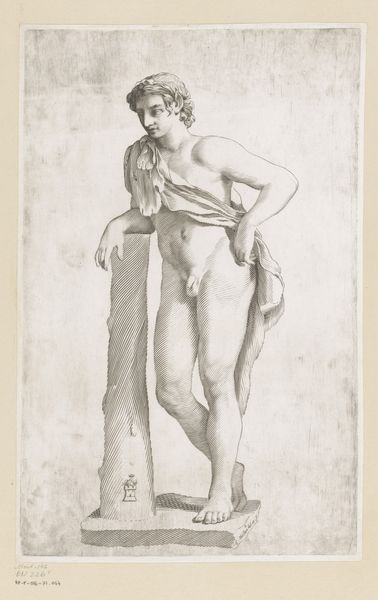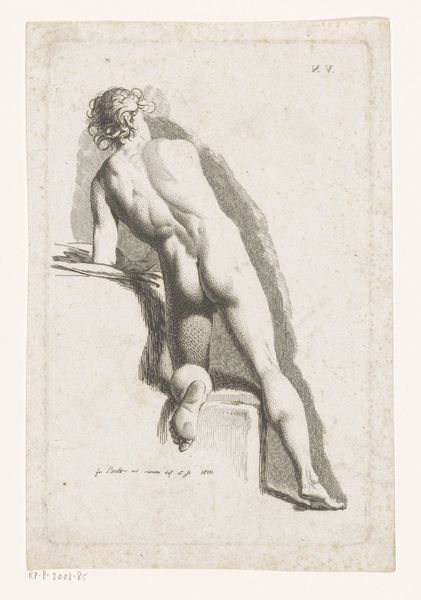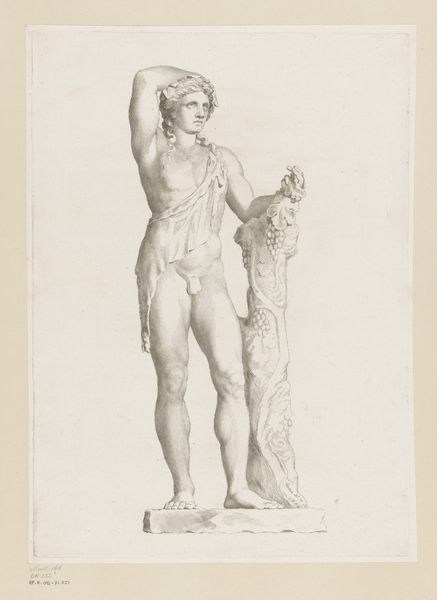
Plate X (10): Apollo, from "Museum Florentinum" (Statuae antiquae dorum et virorum illustrium) 1734
0:00
0:00
drawing, print, engraving
#
drawing
# print
#
history-painting
#
italian-renaissance
#
nude
#
engraving
#
male-nude
Dimensions: Sheet: 14 15/16 × 10 1/16 in. (38 × 25.5 cm) Plate: 14 3/16 × 9 1/8 in. (36 × 23.2 cm)
Copyright: Public Domain
Curator: Our next stop presents "Plate X: Apollo, from Museum Florentinum," a print created in 1734 by Giovanni Battista Jacoboni. I'm immediately drawn to the light grey rendering of the muscular figure against an unyielding backdrop. Editor: Absolutely. There’s something very studied and precise about it, isn't there? The use of engraving gives a clear sense of linear perspective and three-dimensionality in spite of it being printed on a two-dimensional surface. It also reminds the viewer of the means of mechanical reproduction in circulation during the eighteenth century, which shaped public perception. Curator: The figure of Apollo here clearly pulls from Classical tradition – notice the contrapposto stance and idealized anatomy. Jacoboni's choice to depict the god nude emphasizes a kind of timeless beauty. He is leaning gracefully against a draped pillar. Editor: Indeed, but what’s most striking to me is the symbolism woven into every element. Apollo, of course, represents music, poetry, and light, which were fundamental Enlightenment ideals. His relaxed posture hints at a peaceful patronage of the arts, with his power latent but present. The pillar might further point to cultural authority. Curator: Fascinating take! I hadn't considered that reading. My interest gravitates towards how such prints circulated. Produced as part of a museum collection, this piece reveals how antique sculpture was popularized and consumed through print media, especially as available to those unable to see the sculptures in person. How does the dissemination via engravings affect the perceived value, for instance? Editor: Yes, there's also a shift from religious icon to emblem of cultivated knowledge – Apollo as a symbol of intellectual and artistic aspiration. The mass production diminishes any inherent religious weight the deity might have formerly commanded. This print embodies Enlightenment values beautifully by appropriating antique imagery for intellectual, even secular purposes. Curator: Ultimately, reflecting on this print, I am intrigued by how these reproduced images fueled new conversations about art, history, and culture. It provides us an intimate view into the way art and ideas moved between individuals and communities. Editor: For me, the power of this print lies in its ability to speak across centuries. It serves as an example of cultural memory in action, continuing to inform and shape our understanding of ourselves.
Comments
No comments
Be the first to comment and join the conversation on the ultimate creative platform.
